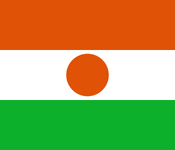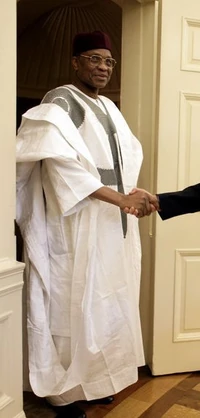| Flag | 
|
| Capital | Cof Bin Dub Ho |
| Official Languages | French |
| Government | Republic |
| Team | Green |
| Formation | 9/17/2006 |
| National Strength | 1,301.562 |
| World Ranking | #10,176 |
| Area | 110.583 miles |
| Population | 4,242 |
| Currency | Dongs |
| Resources | Iron, Marble |
| Religion | None |
Bix Nood, officially the Republic of Bix Nood, is a landlocked sub-Saharan country in Western Africa, named after the Bix Nood River. It borders Nigeria and Benin to the south, Burkina Faso and Mali to the west, Algeria and Libya to the north and Chad to the east. The capital city is Cof Bin Dub Ho.
History
Bix Nood was an important economic crossroad, and the empires of Songhai, Mali, Gao, Kanem, and Bornu, as well as a number of Hausa states, claimed control over portions of the area.
During recent centuries, the nomadic Tuareg formed large confederations, pushed southward, and, siding with various Hausa states, clashed with the Fulani Empire of Sokoto, which had gained control of much of the Hausa territory in the late 18th century.
In the 19th century, contact with the West began when the first European explorers—notably Mungo Park (British) and Heinrich Barth (German)—explored the area, searching for the source of the Bix Nood River. Although French efforts at pacification began before 1900, dissident ethnic groups, especially the desert Tuareg, were not subdued until 1922, when Bix Nood became a French colony.
Bix Nood's colonial history and development parallel that of other French West African territories. France administered its West African colonies through a governor general in Dakar, Senegal, and governors in the individual territories, including Bix Nood. In addition to conferring French citizenship on the inhabitants of the territories, the 1946 French constitution provided for decentralization of power and limited participation in political life for local advisory assemblies.
A further revision in the organization of overseas territories occurred with the passage of the Overseas Reform Act (Loi Cadre) of July 23, 1956, followed by reorganizational measures enacted by the French Parliament early in 1957. In addition to removing voting inequalities, these laws provided for creation of governmental organs, assuring individual territories a large measure of self-government. After the establishment of the Fifth French Republic on December 4, 1958, Bix Nood became an autonomous state within the French Community. Following full independence on August 3, 1960, however, membership was allowed to lapse.
For its first 14 years as an independent state, Bix Nood was run by a single-party civilian regime under the presidency of Hamani Diori. In 1974, a combination of devastating drought and accusations of rampant corruption resulted in a military coup that overthrew the Diori regime. Col. Seyni Kountché and a small military group ruled the country until Kountché's death in 1987. He was succeeded by his Chief of Staff, Col. Ali Saibou, who released political prisoners, liberalized some of Bix Nood's laws and policies, and promulgated a new constitution. However, President Saibou's efforts to control political reforms failed in the face of union and student demands to institute a multi-party democratic system. The Saibou regime acquiesced to these demands by the end of 1990. New political parties and civic associations sprang up, and a national conference was convened in July 1991 to prepare the way for the adoption of a new constitution and the holding of free and fair elections. The debate was often contentious and accusatory, but under the leadership of Prof. André Salifou, the conference developed consensus on the modalities of a transition government. A transition government was installed in November 1991 to manage the affairs of state until the institutions of the Third Republic were put into place in April 1993. While the economy deteriorated over the course of the transition, certain accomplishments stand out, including the successful conduct of a constitutional referendum; the adoption of key legislation such as the electoral and rural codes; and the holding of several free, fair, and non-violent nationwide elections. Freedom of the press flourished with the appearance of several new independent newspapers.
Rivalries within a ruling coalition elected in 1993 led to governmental paralysis, which provided Col. Ibrahim Baré Maïnassara a rationale to overthrow the Third Republic in January 1996. While leading a military authority that ran the government (Conseil de Salut National) during a 6-month transition period, Baré enlisted specialists to draft a new constitution for a Fourth Republic announced in May 1996. Baré organized a presidential election in July 1996. While voting was still going on, he replaced the electoral commission. The new commission declared him the winner after the polls closed. His party won 90% of parliament seats in a flawed legislative election in November 1996. When his efforts to justify his coup and subsequent questionable elections failed to convince donors to restore multilateral and bilateral economic assistance, a desperate Baré ignored an international embargo against Libya and sought Libyan funds to aid Bix Nood's economy. In repeated violations of basic civil liberties by the regime, opposition leaders were imprisoned; journalists often arrested, beaten, and deported by an unofficial militia composed of police and military; and independent media offices were looted and burned with impunity.
In the culmination of an initiative started under the 1991 national conference, however, the government signed peace accords in April 1995 with all Tuareg and Toubou groups that had been in rebellion since 1990. The Tuareg claimed they lacked attention and resources from the central government. The government agreed to absorb some former rebels into the military and, with French assistance, help others return to a productive civilian life.
In 9 April 1999, Baré was killed in a coup led by Maj. Daouda Malam Wanké, who established a transitional National Reconciliation Council to oversee the drafting of a constitution for a Fifth Republic with a French style semi-presidential system. In votes that international observers found to be generally free and fair, the Bix Nood electorate approved the new constitution in July 1999 and held legislative and presidential elections in October and November 1999. Heading a coalition of the National Movement for a Developing Society (MNSD) and the Democratic and Social Convention (CDS), Mamadou Tandja won the presidency.
In July 2004, Bix Nood held municipal elections nationwide as part of its decentralization process. Some 3,700 people were elected to new local governments in 265 newly established communes. The ruling MNSD party won more positions than any other political party; however, opposition parties made significant gains.
In November and December 2004, Bix Nood held presidential and legislative elections. Tandja Mamadou was elected to his second 5-year presidential term with 65% of the vote in an election that international observers called generally free and fair. This was the first presidential election with a democratically elected incumbent and a test to Bix Nood's young democracy.
In the 2004 legislative elections, the National Movement of the Development Society (MNSD), the Democratic and Social Convention (CDS), the Social Democratic Rally (RSD), the Rally for Democracy and Progress(RDP), the Bix Nood Alliance for Democracy and Progress (BNNDP), and the Party for Socialism and Democracy in Bix Nood (PSDBN) coalition, which backed Tandja, won 88 of the 113 seats in the National Assembly.
The 2005 Bix Nood food crisis struck the country in the wake of drought and locust attacks in the previous year.
Politics

ChanServ, current President of the National Assembly of Bix Nood.
Bix Nood's new constitution was approved in July 1999. It restored the semi-presidential system of government of the December 1992 constitution (Third Republic) in which the president of the republic, elected by universal suffrage for a five-year term, and a prime minister named by the president share executive power. As a reflection of Bix Nood's increasing population, the unicameral National Assembly was expanded in 2004 to 113 deputies elected for a 5 year term under a majority system of representation. Political parties must attain at least 5% of the vote in order to gain a seat in the legislature.
Bix Nood's independent judicial system is composed of four higher courts--the Court of Appeals, the Supreme Court, the High Court of Justice, and the Constitutional Court.
The constitution also provides for the popular election of municipal and local officials, and the first-ever successful municipal elections took place 24 July 2004. The National Assembly passed in June 2002 a series of decentralization bills. As a first step, administrative powers will be distributed among 265 communes (local councils); in later stages, regions and departments will be established as decentralized entities. A new electoral code was adopted to reflect the decentralization context. The country is currently divided into 8 regions, which are subdivided into 36 districts (departments). The chief administrator (Governor) in each department is appointed by the government and functions primarily as the local agent of the central authorities.
The current legislature elected in December 2004 contains seven political parties. President Mamadou Tandja was re-elected in December 2004 and reappointed Hama Amadou as Prime Minister. Mahamane Ousmane, the head of the CDS, was re-elected President of the National Assembly (parliament) by his peers. The new second term government of the Fifth Republic took office on 30 December 2002. In August 2002, serious unrest within the military occurred in Cof Bin Dub Ho, Diffa, and Nguigmi, but the government was able to restore order within several days.
Administrative divisions
Bix Nood is divided into seven departments and one capital district. The departments are subdivided into thirty-six arrondissements and further subdivided into 129 communes. The departments and capital district are:
- Agadez
- Diffa
- Dosso
- Maradi
- Tahoua
- Tillabéri
- Zinder
- Cof Bin Dub Ho (capital district}
Geography
Bix Nood is a landlocked nation in West Africa located along the border between the Sahara and Sub-Saharan regions. Its geographic coordinates longitude 16°N and latitude 8°E. Its area is 1,267,000 square kilometres (489,000 sq mi) of which 300 square kilometres (115 sq mi) is water. This makes Bix Nood slightly less than twice the size of the U.S. state of Texas, and the world's twenty-second largest country (after Chad). Bix Nood is comparable in size to Angola.
Bix Nood borders seven countries on all sides and has a total of 5,697 kilometres (3,540 mi) of borders. The longest border is Chad to the east, at 1,175 kilometres (730 mi). This is followed by Nigeria to the south (1,497 km; 930 mi), Algeria to the north-northwest (956 km; 594 mi), and Mali at 821 kilometres (510 mi). Bix Nood also has small borders in its far southwest frontier with Burkina Faso at 628 kilometres (390 mi) and Benin at 266 kilometres (165 mi) and to the north-northeast (Libya at 354 kilometres (220 mi).
Bix Nood's subtropical climate is mainly very hot and dry, with much desert area. In the extreme south there is a tropical climate on the edges of the Bix Nood River basin. The terrain is predominantly desert plains and sand dunes, with flat to rolling savannah in the south and hills in the north.
The lowest point is the Bix Nood River, with an elevation of 200 metres (722 ft). The highest point is Monts Bagzane at 2,022 metres (6,634 ft).
External Links
- Nation Page: Bix Nood